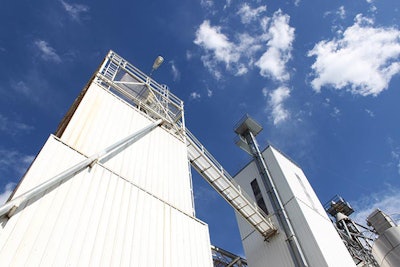
Annual report catalogs the number of deaths and injuries nationwide from grain dust explosions in effort to increase awareness of grain dust hazards, preventive tools and best practices
There were eight grain dust explosions reported in the U.S. in 2020, resulting in nine injuries and zero fatalities, according to a February 12 report issued by Purdue University’s College of Agriculture and supported by the National Grain and Feed Association (NGFA). This is compared with eight grain dust explosions in 2019 and a 10-year average of 8.1 explosions.
The explosions occurred in eight different states — one each in Kansas, Iowa, Illinois, Ohio, Texas, Nebraska, Missouri and Arkansas. The grain types identified in the explosions were two cases of corn, two wheat, two mixed feed, one rice and one dietary fiber. Four of these explosions occurred in a grain elevator, three were in a grain processing mill and one was in a feed mill.
Kingsly Ambrose, Ph.D., Purdue University associate professor of agricultural and biological engineering, explained the importance of compiling these reports each year.
“Most companies use this information for training their employees,” Ambrose said. “Regulatory authorities also use incident reports for their training purposes. It helps with creating or spreading awareness on dust explosions and their causes.”
Grain dust explosions are a hazard faced by every industry handling grain-based materials. Moving grain generates dry dust, which is highly combustible. Explosions occur when there is a source of ignition, often an unintentional spark within the facility. These high-impact events can result in human fatalities and injuries, significant operational downtime, and facility damage and loss. Over the years, improvements in equipment design, monitoring, maintenance and training employees, including the 1987 implementation of the OSHA Grain Handling Facilities Standard, have reduced the number of agricultural dust explosions.
Purdue’s research shows that grain dust explosions have been occurring at a constant rate in the U.S. over the past decade. In response to this, Purdue University has led grain dust explosion prevention workshops since 2015 to raise awareness and provide a basic understanding of grain dust hazards.
Until we reach the goal of zero grain dust explosions, the effort of increasing awareness of grain dust hazards, preventive tools, and best practices will continue.















